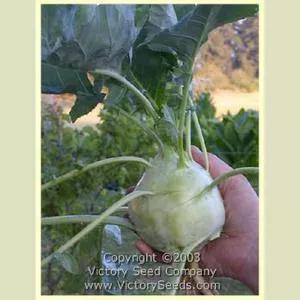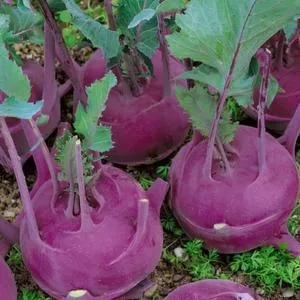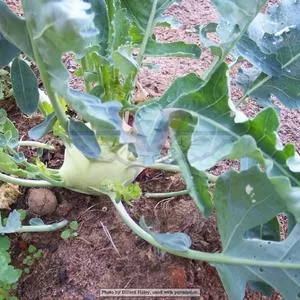Kohlrabi
Brassica oleracea Gongylodes group
If you have never tried eating a Kohlrabi, you are in for a treat. Unlike a turnip, the edible "globe" that you eat develops on top of the soil. This makes them resistant to maggot damage. They have a very mild, turnip-cabbage taste. Because of their mild flavor, many kids love them. This popular European vegetable is gaining popularity here in the U.S.
Like most brassica or cole crops, Kohlrabi grow best in cool weather. Little growth occurs above about 75ºF and they tend to become woody and fibrous. Sow seeds in the early spring for a summer harvest and again in late summer for fall and winter harvests. Plant seeds about 1/4 inch deep in rows two feet apart. Thin plants to four inches apart in the row. Kohlrabi requires fertile soil and ample soil moisture for best results.
According to the USDA nutritional data, they are a good source of Vitamin C and potassium and are low in both sodium and calories. One cup of diced and cooked kohlrabi contains 140% of the recommended daily allowance for Vitamin C and only 40 calories.
Each packet contains one gram, which is approximately 200 to 250 seeds.
Click on variety's picture or name below for more information and quantity pricing options (where available).
4 found




